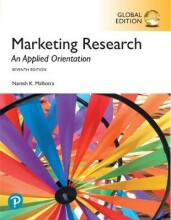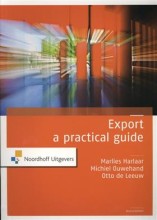Power in and around organizations
45 important questions on Power in and around organizations
Explain Marx's theory of capitalism and class conflict
Class conflict is evident in industrial organizations as labour is dependent on capital and hence the capitalists have power over the workers
Explain the concept of Labour power - Marx
Explain the concept of false consciousness -Marx
False consciousness manifests itself in the commoditization of labour.
- Higher grades + faster learning
- Never study anything twice
- 100% sure, 100% understanding
Explain the theory of commoditization of labour
What is Marx's prediction about capitalism?
What is the humanist view on organizational practices
Theories of cooperation.
Explain the first theory: Chester Barnard
Cooperation is achieved by meeting objectives efficiently as it motivates the members. The reason that organizations rarely survive more than 100 years is because it is difficult to maintain cooperation.
Theories of cooperation.
Second theory: Mary Parker Follett
Conflicts can be solved in ways that satisfy all parties through cooperation. This is more beneficial than solving problems through domination or compromise, which satsify either one or neither of the parties,
What is the modernist view on relationships and power in organizations
Hence, defining relationships increases in importance
Explain the concept of Formal authority
Power associated with formal authority is assigned to the position in the hierarchy, not the person who holds the possition
Explain the concept of IN-formal sources of power
This source of power operates alongside the channels of formal authority
Give 5 informal sources of power
2) expertise
3) Coercive force
4) Ability to apply normative sanctions
5) Opportunities
Informal power uses person's resources while formal does not
Explain the concept of rational decision-making
Rational decision making in real life, explain the shortcomings of people!
What is the result of bounded rationality? Regarding decision-making
Explain the strategic contingency theory
However, power is linked not just handling uncertainty but handling uncertainty that otherwise would negatively affect the organization.
Power is also increased when no other unit is able to perform the coping activity. The coping activities for uncertainty include prevention and forecast.
Explain the resource dependency theory
Already powerful institutionalized actors can subvert the resources and power redistribution to those who want to use newly acquired power.They are able to stabilize the existing structures of power despite facing changing circumstances.
An important implication of this theory is that institutional and political power relations can make an organization LESS responsive to its environment
Explain why symbols are important to the dynamics of power relationships
Explain the concept of symbolic power
What is an (organizational) conflict?
Organizational conflict is the struggle between two or more individuals or groups in an organization or between organizations.
Explain the relationship between conflict and performance
Too little conflict and too much conflict will result in poor organizational performance but an intermediate range of conflict will produce optimal performance.
This is because intermediate levels of conflict stimulates ideas and points of view, strengthens ingroup chohesiveness and minimizes the negative effects of uncooperative behavior and open hostility.
If there is little or no conflict, people are unfocused and unmotivated.
Explain the inter-unit conflict model
The conditions for conflict can evolve into an actual conflict. Observed conflict can be analyzed by referencing their local conditions and contexts.
Why is the observation of conflict difficult?
These defense mechanisms include avoidance and smoothing.
Therefore, conflict does not present itself overtly every time. The observable behaviors associated with conflict are on the right side of the figure.
What is the inter-unit conflict model used for and what are the benefits?
The model is beneficial for profiting strategies to lower or raise the level of conflict after the source of conflict has been identified
What is the modern perspective on organizational control?
Control processes help circumscribe idiosyncratic behavior -which ensures that members conform to the rational plans of the organization.
Therefore, organizational control is necessary because of the diversity of motivations among the employees who join the organization and the consequent problem of aligning these interests to best serve the organization's objectives.
What is the goal of cybernetic control and how does the system work?
The system is designed by first setting goals and measures of these goals to assess progress towards a desired level of performance. If an employees deviates from the desired level, they are provided with feedback of either rewards and punishments depending on the situation. The system controls an organization's performance by constantly adjusting the organization to ensure performance optimization.
What does the cybernetic control measures?
The organization can either measure outputs directly or can measure the behavior that achieves outputs
When does behavioral control works best?
How do cybernetic control systems control organizational performance?
The link is supported by sanctions for deviating from established performance standards.
System that sanctions employees can contribute to power and politics. Rewards symbolize powers and the outcomes of cybernetic control can affect group and individual politics.
Organizations apply cybernetic control at multiple levels,
which 3?
Organizational level:
Environmental level:
What is a problem within the cybernetic control system and how can one overcome this?
The agency problem can be overcome through design control systems that ensure agents act in the best interests of principles.
The primary control is contracts that specify goals that are monitored and sanction that reward or punish the agent's performance
Explain the concept of information asymmetry within the agency theory
Agents control the information in the control system and therefore place principles at a disadvantage by manipulating the information on which principles monitor and assess them.
Information asymmetry can be corrected by choosing behavioral or outcome controls
1)Explain the concept of transaction costs within the exchange of goods and services
2) what happens when the market fails?
Transaction costs associated with the exchange of goods and services are the costs incurred to overcome market imperfections (communication and market fees).
However, when the market fails, transaction costs rise and competition no longer controls it. The control over transaction costs switches to bureaucratic control that is exercised through rules and procedures, formal job specifications and the hierarchy of authority.
Explain the concept of clan control
and explain the link with transaction costs
Clan control controls members of an organization through cultural norms, values and beliefs.
Clan control is established by socializing new members of the organization to help internalize the cultural understandings.
If clan control established, the organization will require much less monitoring and therefore transaction costs will reduce.
Name the three additional types of organizational control
(besides clan control)
1) Coercive control: the threat of force to align behavior with organizational objectives
2) Remunerative control: the power to provide or withold payment for labour through wages and salaries. This is the primary form used by modern economic organizations
3) Normative control: the power of cultural values and assumptions to control how members perceive, think and feel
Explain the main goals of the
cybernetic theory
agency theory
and transaction cost theory
Cybernetic theory: align actual with desired performance
Agency theory: ensure agents act in the best interests of owners
Transaction cost theory: use type of control that minimizes transaction costs
The theory of communicative rationality
What is disciplinary power?
The internalized effects of surveillance that manifest as discipline. Disciplinary power can be used in organizational cultures and clan control.
Surveillance leads to self-surveillance through two complementary mechanisms, which two?
Gaze: the theory that if one knows they are being looked at, they feel objectified and anxious. The gaze sets up the expectation of surveillance.
Interiorization: the incorporation of an idea into one's life
Circuits of power are techniques of discipline and production which reinforce the status quo, name 3 circuits of power
1) episodic circuit; located in daily interactions
2) Dispositional circuit: located in socially constructed rules
3) Facilitative circuit: located in systems and mechanisms that include technology, work and rewards
The three circuits intersect and lead to the empowerment of disempowerment of groups who use them, this can also be done in organizations
Explain in the context of cultural globalization, deterritorialization
The loosening of subjectivity and identity from institutions of modernity. The borders of these institutions are breached by new technologies of communication and transport.
Deterritorialization is caused by the discovery and use of escape routes; which in turn loosen the control of social structures from within its own borders.
What does the dual labour market theory argue?
That the market for labour ois composed of primary and secondary sectors
This duality is explained that employers want to remain competitive and therefore employ qualified workers. These qualified workers must be compensated with substantial benefits. The high costs are therefore offset by employing unskilled workers to perform less central tasks who can therefore be given less pay.
Explain the concepts of primary and secondary sectors
Primary: high wages and good career opportunities
Secondary: lower wages and poor employment conditions, such as lack of job security
Explain the theory of double strangeness
What are gendered organizations
The question on the page originate from the summary of the following study material:
- A unique study and practice tool
- Never study anything twice again
- Get the grades you hope for
- 100% sure, 100% understanding






























